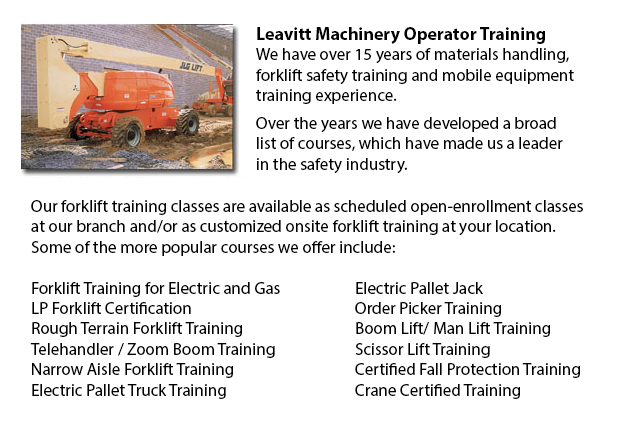
Oakville Aerial Lift Certification - Aerial Lift Certification is for those who need an in-depth understanding of aerial lift safety. Operators and inspectors, maintenance workers, construction craftsmen and supervisors need to perform a certificate and training program. Federal, provincial and state regulations require companies to be certified to be able to carry out in-house aerial lift inspections.
The majority of workers who are required to perform tasks at elevated level will normally utilize the same means to get to these desired heights, regardless of the type of work which needs to be done. Aerial lifts and scissor lifts are the mechanized devices utilized in order to lift employees and equipment to elevated sites.
Bucket trucks called Cherry Pickers are aerial platforms that feature a supported boom and bucket. The primary hazard to utilizing this particular type of platform is normally falls, electrocutions, and tip overs. Certification makes sure that workers who use aerial lifts are trained correctly to operate the machine safely. Training also makes certain that workers know how to maintain aerial work platforms based on the instructions of the manufacturer.
Aerial lift training certification programs will cover the following: Vehicle-mounted aerial lifts, Boom-supported scissor lifts and aerial lifts. Trainees will learn about safe operating procedures and would gain an understanding about the hazards that usually result in aerial lift incidents. They will become technically competent in the various types of aerial lifts, as well as terms and components. From selecting the best aerial lift for the task to interpreting rated capacity charts, the certification program will provide workers with all that they should know to safely carry out their work.
Those who are assigned the task of checking aerial lift devices should know how to check booms, gears, structural components, operating mechanisms, control systems and functions, power plants, braking systems, shafts and pins, attachments, hydraulic, pneumatic and electric components, emergency safety devices and operator aids, et cetera. Training would include the following: the inspector's role in lessening accidents and liability exposure; how to perform a pre-use, monthly and annual inspection; how to apply and interpret rules regarding aerial lift safety standards; how to write inspection reports; inspection procedures, checklists and techniques; following record keeping requirements; understanding and applying the three levels of aerial lift inspection; and when to remove defective aerial lifts from service.
-
Oakville Overhead Crane Safety Training
Oakville Overhead Crane Safety Training - Overhead crane safety training equips operators with skills and knowledge regarding crane safety measures, accident avoidance, materials handling, and machinery and stock protection. Trainees will learn the t... More -
Oakville Crane Training Schools
Oakville Crane Training Schools - Our various Mobile Crane Operation programs are designed for skilled operators who needs re-certification or certification, and for inexperienced individuals who are seeking their very first job as an operator of a c... More -
Oakville Overhead Crane Certification
Oakville Overhead Crane Certification - The overhead crane certification course is a course that is designed to help trainees, even though they have language or literacy limits. The course consists of a classroom theory part and a practical hands-on... More -
Oakville Forklift Training Programs
Oakville Forklift Training Programs - If you are searching for work as an operator of a forklift, our regulatory-compliant forklift training programs provide exceptional instruction in various types and styles of forklifts, classes on pre-shift inspe... More -
Oakville Fall Protection Ticket
Oakville Fall Protection Ticket - The number one cause of death in the construction business come from fall-related accidents. There is more possibility for fall accidents depending on the types of work being performed within your workplace. Thus, be... More -
Oakville Zoom Boom Training
Oakville Zoom Boom Training - Zoom Boom Training focuses on correctly training potential operators on variable reach forklifts. The training objectives consist of gaining the understanding of the machine's physics and to define the job of the operato... More -
Oakville Aerial Lift Ticket
Oakville Aerial Lift Ticket - A boom truck is often recognized by the cable and telephone company vans that have the elongated arm folded over their roofs. Commonly, a bucket-like apparatus sits at the extension of extendable arms. Often referred to... More -
Oakville Scissor Lift Training
Oakville Scissor Lift Training - Scissor lifts need to be operated competently to be able to protect the safety of the machinery and the safety of people in the workplace. Operators who are skilled are trained to drive the specific model of scissor l... More

Forklift Certification Oakville
TOLL FREE: 1-888-254-6157
Oakville, Ontario
forkliftcertificationoakville.com
Email Us
About Us


